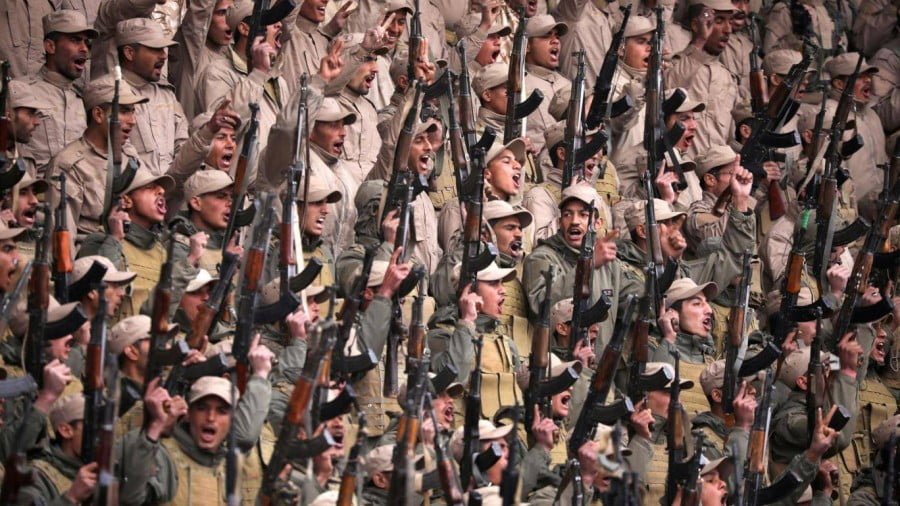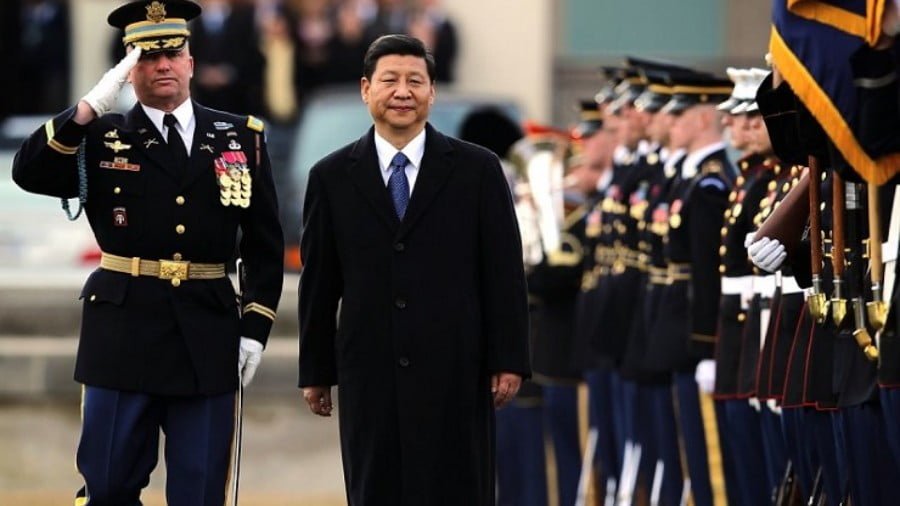By Remaining in Syria the US Is Fuelling More Wars in the Middle East
Seldom has an important new US foreign policy crashed in flames so quickly and so spectacularly, achieving the very opposite results to those intended.
It was only ten days ago that the US Secretary of State Rex Tillerson unexpectedly announced that American military forces would remain in Syria after the defeat of ISIS. Their agenda was nothing if not ambitious: it included the stabilisation of the country, getting rid of Bashar al-Assad, rolling back Iranian influence, preventing the resurgence of ISIS and bringing an end to the seven-year Syrian war. Tillerson did not seem to care that this new departure was sure to offend a lot of powerful players in and around Syria and was quite contrary to past US pledges that it was only fighting in Syria to defeat ISIS and had no other aims.
In effect, the US was reversing its old policy of trying to keep its distance from the Syrian quagmire and was blithely plunging into one of the messiest civil wars in history.
The first sign of this radical new development came early last week with an announcement that the US was going to train a 30,000-strong border force that, though this was not stated, would be predominantly Kurdish. This was furiously denounced by Turkey and Tillerson appeared to disavow it. But his speech spelling out the new interventionist American policy on 17 January was just as explosive and was the reason why, five days later, Turkish tanks were rumbling across the Turkish-Syrian border into the Kurdish enclave of Afrin.
A fertile and heavily populated pocket of territory, this is one of the few parts of Syria that had not been devastated by the war. But this is changing fast as Turkish bombers and artillery pound the town of Afrin and the 350 villages around it. The Kurdish People’s Protection Units (YPG) have been fighting back hard, but unless there is some diplomatic solution to the crisis, the enclave will end up looking like much of the rest of Syria with whole streets reduced to mounds of smashed masonry.
The fighting over the last five days has exposed as a dangerous fantasy the US hopes that its new interventionist policy would stabilise northern Syria. Instead of weakening President Bashar al-Assad and Iran, it will benefit them, showing the Kurds that they badly need a protector other than the US. The Kurds are now demanding that the Syrian Army go to Afrin to defend it against the Turks because it is an integral part of Syria. A military confrontation between Turkey and the US would be much in the interests of Tehran and Damascus. The Iranians, denounced by the US as the source of all evil, will be glad to see America in lots of trouble in Syria without them having to stir a finger.
Yet the outbreak of a new Kurdish-Turkish war over the last week should have been very predictable. The US became militarily engaged in Syria in 2014 in order to prevent the capture of the Kurdish city of Kobani by ISIS. American intervention in the siege was successful and was the beginning of an alliance between US air power and YPG ground troops that was to defeat ISIS.
This development was deeply alarming for Turkey which felt threatened by seeing a well-armed, US-backed, de facto Kurdish state expanding along its southern frontier. Even worse, from the Turkish point of view, this new entity, known to the Kurds as “Rojava”, was controlled by the Syrian branch of the Kurdistan Workers Party (PKK) that has been leading a Kurdish rebellion in Turkey for over 30 years.
The US had reassured the Turks that the American alliance with the YPG was purely military, tactical and directed against ISIS. But, if the 2,000 US troops remain in Kurdish-held Syria, they change the military balance in the region because they are backed by the gigantic firepower of US Air Force. In effect, the US will be guaranteeing with military force the practical independence of a Kurdish state in northern and eastern Syria. Given the oppression and violence the Kurds have suffered in Syria and elsewhere, they have every right to seek a degree of autonomy close to national self-determination, but neither the Turkish nor the Syrian governments will accept this.
Up until now President Trump had made few changes in President Obama’s strategy in Iraq and Syria which was more forceful than it looked. But it was also cautious because Obama had an acute sense of what could go wrong in such ventures. He was careful not to overplay his hand or allow himself to be manipulated by regional powers.
The post-ISIS US policy in Syria and Iraq coming out of the Trump administration has more far-reaching goals than before, but is vague on how they should be achieved. There is the same whiff of wishful thinking about Tillerson’s speech as brought about past US disasters in the Middle East.
Ominous precedents include Lebanon in 1983 where the US had a limited military presence in Beirut as a symbol of US power and determination. But a symbol can also be a target and on 23 October of that year a vehicle packed with explosives was driven into the US Marine barracks near Beirut airport and blew up, killing 241 US service personnel.
A similar self-destructive sense of self-confidence and superiority was very evident among the Americans occupying Baghdad in 2003. US generals believed that they were fighting the remnants of the old regime when, in fact, they were facing a mass uprising and soon only controlled islands of territory.
The US may want to get rid of Assad and weaken Iran across the region but it is too late. Pro-Iranian governments in Iraq and Syria are in power and Hezbollah is the most powerful single force in Lebanon. This is not going to change any time soon and, if the Americans want to weaken Assad by keeping a low-level war going, then this will make him even more reliant on Iran.
The present Turkish incursion shows that Ankara is not going to allow a new Kurdish state under US protection to be created in northern Syria and will fight rather than let this happen. But the YPG is highly motivated, well-armed and militarily experienced and will fight very hard, even though they may ultimately be overwhelmed by superior forces or because the Turkish and Syrian governments come together to crush them.
It was a bad moment for the US to stir the pot by saying it would stay in Syria and target Assad and Iran. A Kurdish-Turkish war in northern Syria will be a very fierce one. The US obsession with an exaggerated Iranian threat – about which, in any case, it cannot do much – makes it difficult for Washington to mediate and cool down the situation. Trump and his chaotic administration have not yet had to deal with a real Middle East crisis yet and the events of the last week suggest that they will not be able to do so.
By Patrick Cockburn
Source: The Independent







